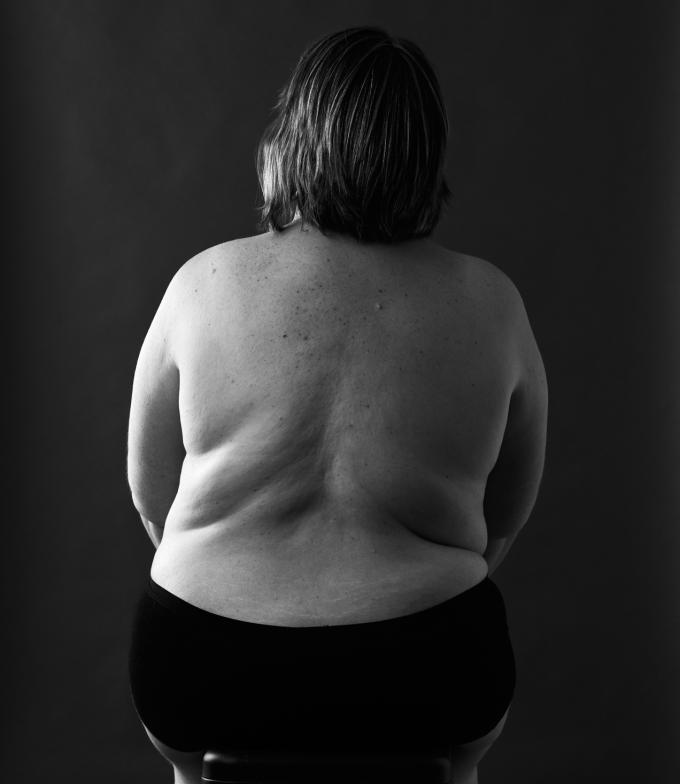
A body lift or belt lipectomy describes a surgical procedure which removes unwanted loose skin from the lower abdomen and continues around the body to include the lower back just above the buttocks.
In addition to removing excess skin, it also aims to lift the buttocks, outer thighs and pubic region, which can drop following weight loss.
Please note that individual results will vary depending on the individual, their genetics and lifestyle factors, and all surgeries have associated risks. Before proceeding with any surgery, it is advisable to seek a second opinion from an appropriately qualified medical practitioner such as a Plastic Surgeon. Dr. Gary Avery (MED0001633092) a registered medical practitioner, with specialist registration in Surgery – Plastic Surgery. Dr Avery is also a member of the two leading professional associations for plastic surgeons in Australia, Australasian Society of Aesthetic Plastic Surgeons (ASAPS) and Australian Society of Plastic Surgeons (ASPS). Their websites provide additional information regarding plastic surgery in Australia that you might find useful, please visit ASAPS and ASPS.
Words cannot express my gratitude. A simple, but deeply felt ‘thank you’ hopefully conveys the gratitude and respect I have for you.
The term body lift describes a specific surgical procedure that is similar to a full abdominoplasty, which extends the whole way around the body to address the upper outer thighs, lower back and buttocks. It's often also referred to as a 'lower body lift' or 'belt lipectomy'.
Surgery to other body parts such as the arms, inner thighs, breasts and even upper back may also be considered by people who have lost significant weight, and are often referred to as lifting procedures. This group of procedures are also referred to as body contouring surgery.

Tayla, a wonderful member of our Care Team.
Patients considering any form of body surgery will need to come in for a consultation with Dr Avery to discuss your expectations, along with the surgical options for how these can be achieved. During your consultation with the Avery team, we will ensure that the surgery you are considering is the appropriate choice for you.
At Avery, we welcome the opportunity to have an open conversation with you to understand the changes you are looking for with surgery. Our patients’ stories matter a great deal to us.
Wherever you are on your personal journey, we would like to assist you. Your reasons for having surgery and your expectations from surgery are important conversations to have before undergoing surgery. Dr Avery will also assess your health and medical history to ensure any surgical procedure you are considering is a safe and appropriate choice for you.
Your Body Lift
Your GP or another specialist that knows you well must make a referral to Dr Avery. The decision to have a consultation may be made after talking with family or friends or following your own research into plastic surgery and Dr Avery.
The purpose of your initial consultation with Dr Avery is to discuss your motivations for surgery and expectations from surgery. It is an opportunity to openly communicate what you want to change, alleviate or remove. We will discuss any concerns you may have about your potential surgery and its outcome. We will also collect information that is specific and tailored to you, to add to the knowledge you acquired through your research outside of the consultation process.
When you arrive at Avery, you will check in with our Care Team and complete a medical history form, if not already completed. We encourage you to bring a supportive family member or friend who can remain with you throughout the consultation if you like, and be a sounding board during your decision-making process following the consultation.
The consultation with Dr Avery will include an examination of the area of your body that you are concerned with and considering changing. Our aim will be to determine if plastic surgery can achieve what you hope it will, and if so, what specific plastic surgery procedures will address your concerns and meet your expectations in a realistic way.
Plastic surgery procedures can impact physical appearance and there may be a psychological response to the changes in your body after surgery. Besides the reasons for having plastic surgery, it is important to be fully aware of any potential limitations of the operation and how they apply to your unique situation. This includes the risks of having surgery and all of the possible complications that can occur after surgery, and what can be done if these occur.
We will discuss what the surgery involves, how it relates to you specifically given your uniqueness and current state of health, what the possible risks of the surgery are, and then decide if having the surgery is a safe and appropriate choice for you as an individual.
Your consultation will also include a discussion of the estimated financial implications of having this surgery or surgeries that were discussed with Dr Avery.
After your consultation, our Care Team will be there to talk through any further questions you have, including the cost of the surgery.
At Avery, our goal is to ensure you are equipped with the knowledge needed for you to feel empowered throughout the decision-making process, surgery and post-surgery.
The incision and subsequent scar for body lift surgery is generally made just above the pubic area, continuing around the very upper thighs and finally around the back above the upper buttocks, where the scar can be hidden below an underwear or bikini line. A small second incision will also be made around the navel (umbilicus or belly button) in order to move its position once the skin is tightened.
The length of the surgery will depend on the amount of tissue removed and whether or not additional procedures such as liposuction are being performed.
As with all surgical procedures, body lift surgery does have risks, despite the highest standards of practice. It is not usual for any surgeon to outline every possible side effect or rare complication of a surgical procedure. However, it is important that you have enough information about the most common risks to fully weigh up the benefits, risks, and limitations of surgery.
The following possible complications are listed to inform and not to alarm you. There may be other complications that are not listed. Smoking, obesity, and other significant medical problems will cause greater risk of complications.
Some general risks and possible complications of surgery include, but are not limited to the following:
- Heavy bleeding from an operated site. This may require a blood transfusion.
- Infection that may require treatment with antibiotics or further surgery in some cases.
- Allergic reaction to sutures, dressings or antiseptic solutions.
- The formation of a large blood clot (haematoma) beneath an incision site may require further surgery.
- Complications such as heart attack, pulmonary embolism or stroke may be caused by a blood clot, which can be life threatening.
- Pain, bruising and swelling around the operated site(s).
- Slow healing, often related to smoking or diabetes.
- Short-term nausea following general anaesthesia and other risks related to anaesthesia.
- Tissue cannot heal without scarring and that how one scars is dependent on individual genetic characteristics. Dr Avery will do his best to minimise scarring but cannot control its ultimate appearance.
- Smoking or using nicotine products during the 3–4-week pre-operative and post-operative periods is prohibited as these could dramatically increase the chances of complications.
- All medications I am currently taking, including prescriptions, over the counter remedies, herbal therapies and supplements, aspirin, and any other recreational drug or alcohol use can affect the safety of my surgery.
- There can be no guarantees about the results of any surgery.
Some specific risks for body lift surgery include, but are not limited to the following:
- Bleeding / haematoma requiring surgery
- Infection
- Change in sensation or numbness of abdominal skin
- Seroma (fluid collection under the skin)
- Changes in shape or appearance of pubic hair
- Damage to deeper structures
- Loss of umbilicus (belly button) or displacement to the side
- Delayed healing
- Pulmonary embolism (blood clots in the lungs)
- Residual skin irregularities at the ends of incisions
- Pain (maybe prolonged)
- Asymmetries of contour
- Disappointment
- Failure to alleviate symptoms of rash and back pain
- Further surgery required
- Genital region numbness
- Further recovery time if further surgery is required
- Persistent swelling in the legs
- Skin discoloration and swelling
- Extended hospital stay
- Wound non-closure
- Loss of skin from insufficient circulation (requiring further surgery and skin graft)
- Fatty tissue found deep in the skin might die resulting in areas of firmness within the skin and contour irregularities in the skin
- DVT (deep vein thrombosis) – clot in legs
- Allergic reactions to tape, suture material, topical preparations
- Permanent scars that may be of a different colour, contour, or ‘bunching’ due to the amount of excess skin, asymmetrical, or have visible suture marks
- Allergic reactions to tape, suture material, topical preparations
The Australasian Society of Aesthetic Plastic Surgeons (ASAPS) has further information about body lift surgery including the possible risks for this surgery.
Several nights in hospital are generally required post body lift surgery to aid with your recovery. Depending on the complexity of the surgery and any additional procedures, 3-6 weeks off work may also be recommended.
There will be some bruising and swelling, which generally subsides about 2-6 weeks after the operation. You will be required to wear a compression garment or bandages for approximately 6 weeks to provide support and reduce post-operative pain or swelling.
A customised pain relief program will be created for you and issued before you leave the hospital. If circumstances change at any stage during the recovery period, then the pain medication or follow up appointments can be adjusted accordingly.
The financial aspects of your surgery are as important as the medical elements when planning for surgery. At Avery, the surgeries we offer fall into three different financial categories: Self-funded – aesthetic surgery; self-funded – plastic and reconstructive surgery; and health insured – plastic and reconstructive surgery.
To make sense of these three financial categories, we have created a detailed price guide to help you understand what may or may not be covered by your health insurer/Medicare and your out of pocket expenses.
To download this guide, please click here.
For more information or to book a consultation, please contact our team on 02 4002 4150.
Body Lift FAQs
A body lift is a specific surgical procedure within the larger group of body contouring surgical procedures. Body contouring surgery is the term used to describe a number of operations that are generally considered by people who have lost a significant amount of weight. Following weight loss, the overlying skin may not shrink and may leave loose hanging skin that produces symptoms such as skin irritation, difficulty with clothing choices and concern with appearance. Other specific procedures that could be considered in this category of body contouring surgery include variations of an abdominoplasty (often know as a tummy tuck within the general public), breast lift, thigh lift or reduction, arm lift or reduction and neck lift. The body lift procedure addresses loose lower abdominal skin that an abdominoplasty does and also the upper outer thighs and buttocks.
The most appropriate time, for clinical reasons, to have body lift surgery is when your weight loss is mostly complete and your weight has been stable for several months. If you have had surgery to help achieve weight loss, you may be required to wait at least a year before body contouring surgery.
It is possible to have a consultation regarding potential surgery during your weight loss journey, i.e., before your weight loss has stabilised.
Most body contouring procedures will be done under a general anaesthetic, and all undertaken in an accredited hospital.
Simply walking is advised and is recommended during the first 2 weeks after surgery. An increase in activity is encouraged between 2-6 weeks, limiting this increase based on how your body feels and responds. From 6 weeks you can be mostly unrestricted with exercise but it may not be until 12 weeks following surgery that you feel you are back to pre-surgery fitness, or even improved from your pre-surgery fitness if physical symptoms and restrictions have been addressed with surgery.
Pain following surgery will vary depending on the extent of surgery. Pain immediately after surgery may be reduced by the use of local anaesthetic at the surgical site given during the surgery. The pain will also be managed with tablets or injections as required. Physical measures such as the dressings and supportive garments as well as limited movement and possibly ice packs will all help minimise any pain. Pain is usually well tolerated within a few days after surgery with all these measures. If your pain is increasing following surgery this is usually a sign that you may need a review to ensure your recovery is proceeding as expected.
Dressings and supportive garments will offer support to the wounds and the areas of your body that are still recovering. You will be also be advised to restrict excessive movement of the surgical area in the first two weeks after surgery. A good general rule throughout your recovery is if an increase in movement or activity does not increase any discomfort or swelling, then it is probably safe and this gradual progression back to ‘normal’ will be encouraged.
Typically, if your surgery is considered cosmetic in nature and does not have a related item number, private health insurance does not cover this surgery. If the surgery is being considered to address significant developmental differences, changes from previous trauma, or to relieve nasal obstruction, then a Medicare item number may apply to the surgery and there may be some cover of this procedure through private health insurance.
Sun exposure can adversely impact early wound healing and have an adverse effect on the pigmentation and long-term quality of you scar(s). All scars should be protected from sun until they are mature, which may not be until one-year post-surgery. A spray tan is okay after a few weeks (once the wound is healed).
Abdominoplasty
Body Contouring
Combined Breast and Abdominal Surgery
View all services
Your initial consultation
During your initial consultation we welcome the opportunity to have an open conversation with you to understand the changes you are looking for with your surgery and talk through any concerns or specific goals you may have.
Your initial consultation will include an examination of the area of concern and we'll work with you to determine if plastic surgery can achieve what you hope it will, and which specific plastic surgery procedures will address your concerns and meet your expectations in a realistic way.

Dr Avery will assess your health and medical history to ensure any surgical procedure you are considering is a safe and appropriate choice for you.